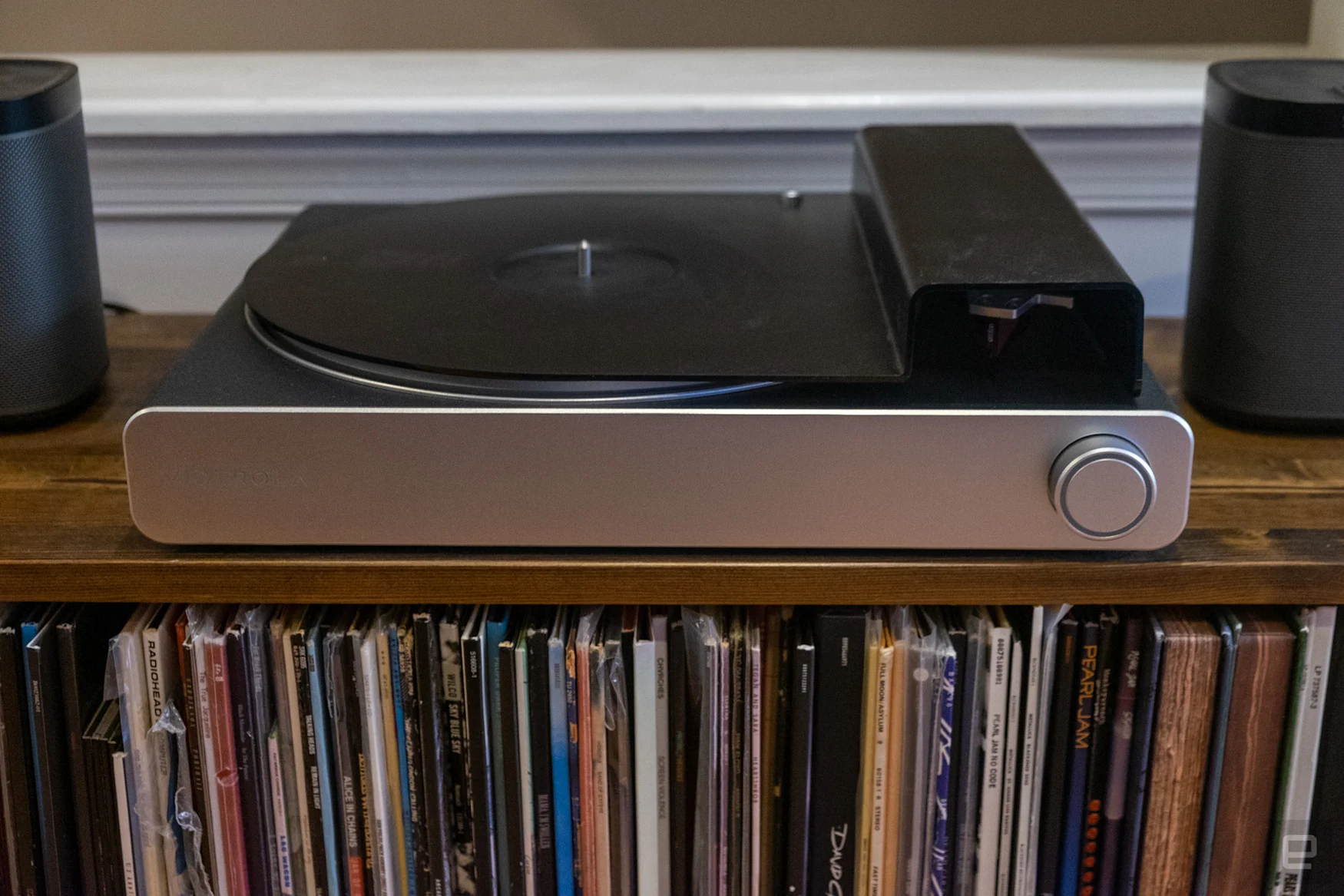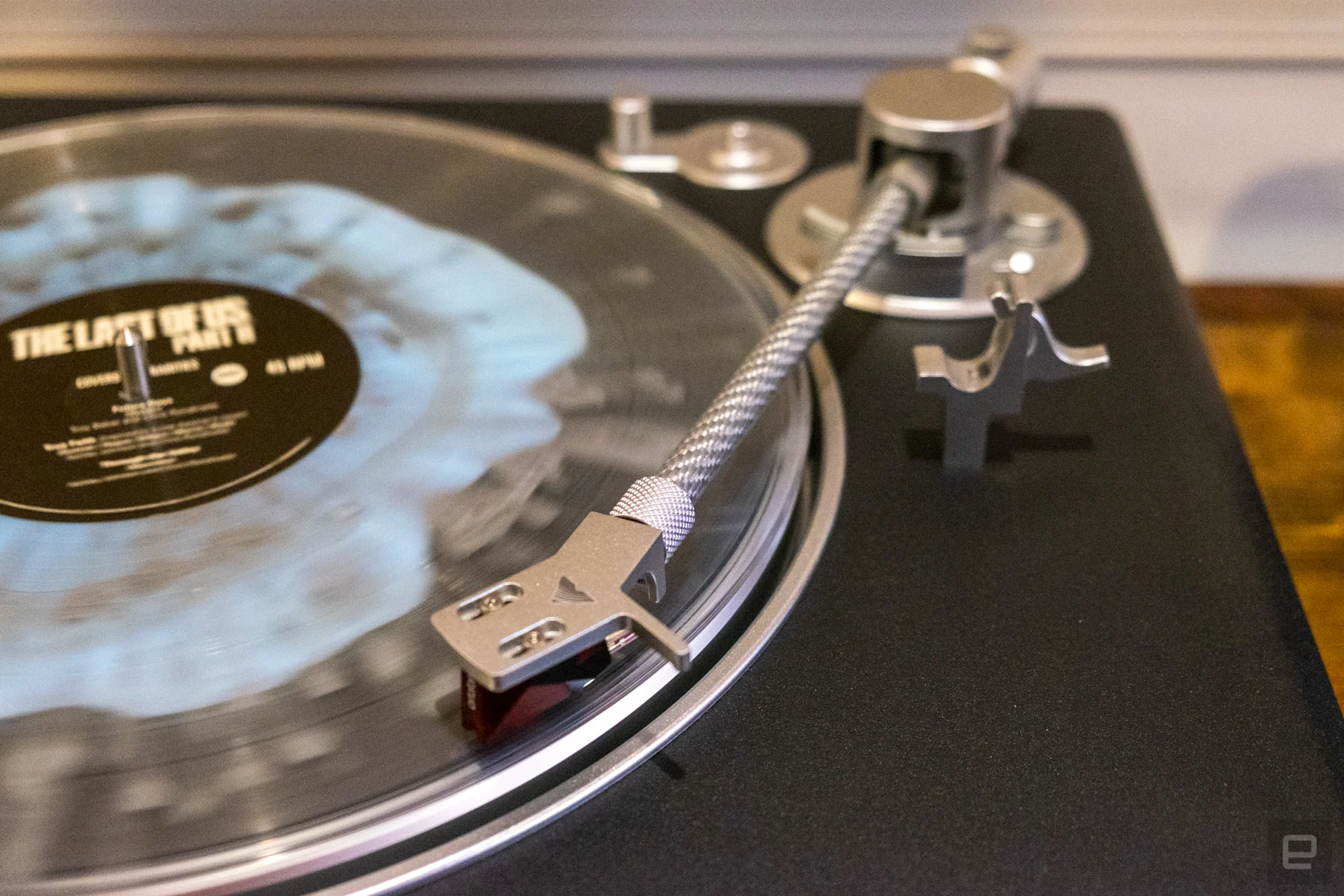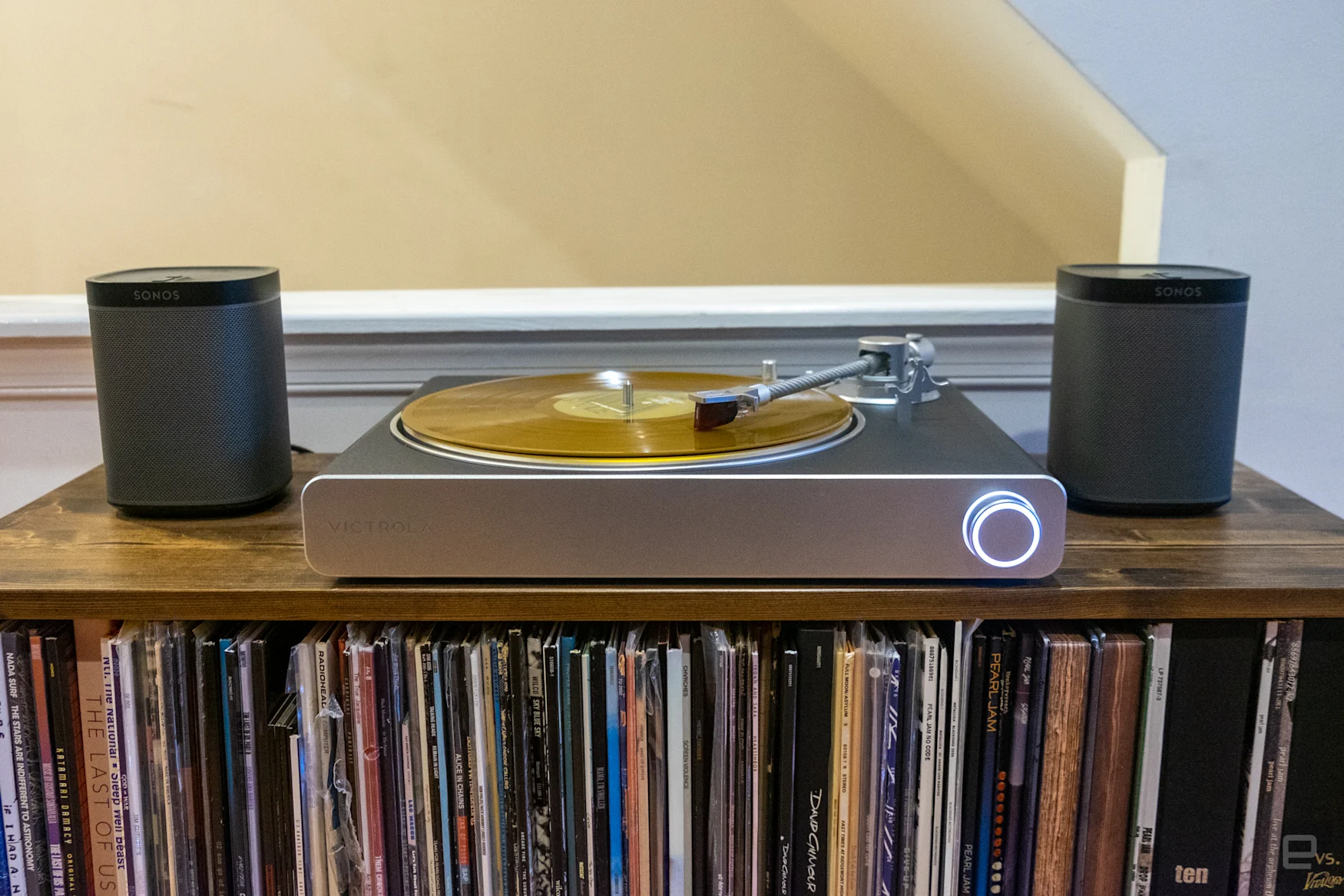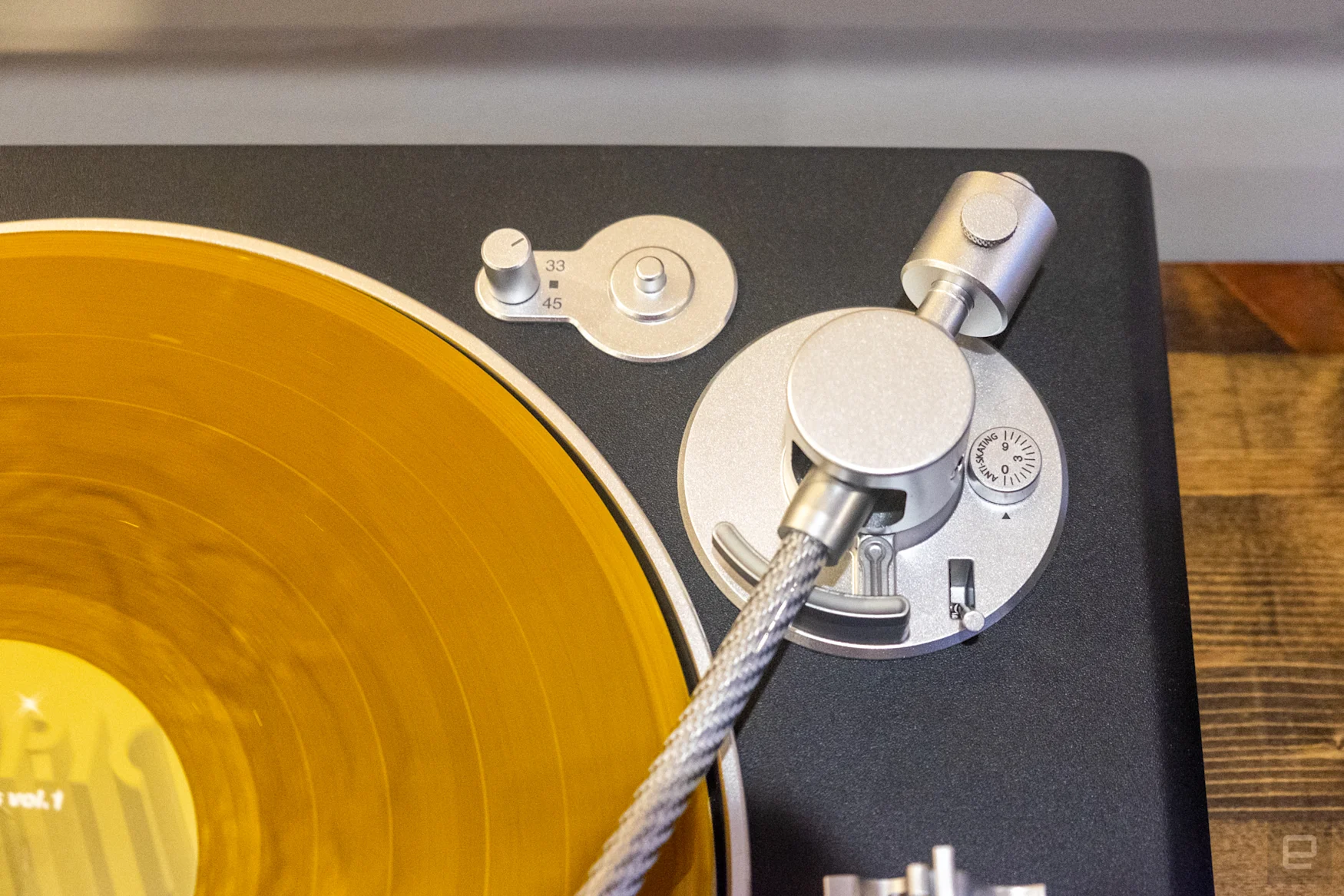Image Credit: Nathan Ingraham / Engadget
My only complaint about the Stream Carbon’s design is its somewhat wonky dust cover, an unremarkable piece of plastic that covers the platter and tonearm. It’s not connected to the turntable in any way, and I often found myself wondering what to do with it when I was actually playing records. Not a huge deal, but worth knowing about ahead of time.

Nathan Ingraham / Engadget
Setup was quite simple. The tonearm counterweight has two marks on it, each of which corresponds to the cartridge the Stream Carbon includes; my review unit came with the Ortofon Red 2M. Then it’s just a matter of putting the belt into place and dropping the platter and mat over the top. If I were using standard speakers, I’d just plug them in, but the whole point of testing the Stream Carbon was to get it hooked up to my Sonos network. Fortunately, that too was easy.
After installing the Victrola Stream app on my iPhone, it was just a matter of tapping “add a turntable” and adding it to my WiFi network. You then need to tell the turntable which Sonos speaker or group to use by default; I had set up two Play:1 speakers next to the turntable for this test. At that point, I didn’t need to do anything else in the Victrola app as everything playback related went through my Sonos system.

Nathan Ingraham / Engadget
I kicked things off with my bright pink Carly Rae Jespen EMOTION record; moving the tonearm automatically started the record spinning, and after a short delay the tunes started coming through my Sonos speakers. From there, I could use the Sonos app to bounce that music anywhere I wanted in my house. I have speakers on each floor of my home and could play all of them at once, or just a single set. It felt pretty weird and rather indulgent to put on a record on the first floor and listen to it up in my third-floor office, but it is definitely something I tried. Putting aside that somewhat odd use case, though, the Stream Carbon reliably worked with any and all Sonos products I have in my house – that includes a pair of older Play:1s, some gen-2 One speakers and the first-gen Beam soundbar.
After getting set up, I realized there was no real need to have a pair of speakers located directly next to the Stream Carbon. That should have been immediately obvious when I started setting things up, but it felt a little weird to have music automatically start playing on the Beam below my TV (the only other Sonos speaker in my living room). But there’s definitely something freeing about being able to place the Stream Carbon anywhere you want without having to worry about the physical proximity of the speakers you’re using. It didn’t make sense to put the turntable anywhere else in my living room, but I’d definitely consider a less traditional placement if I was building my setup from scratch.

Nathan Ingraham / Engadget
As for audio quality, that depends on your speakers and the condition of your records. When playing my newer vinyl, though, the Stream Carbon sounded great. I jumped between the sparse acoustic tones of Gustavo Santaolalla’s score for The Last of Us Part II and Howard Shores majestic orchestral compositions for the Lord of the Rings films to pop tunes like the aforementioned Carly Rae Jepsen record and a greatest hits compilation from Canadian electro-rock outfit Metric.
I’m no audiophile, but I was consistently impressed with the detailed soundscapes I heard with the combo of my Sonos speakers and the Stream Carbon. Noise from the records themselves was also minimal – my older albums like an original pressing of Metallica’s Master of Puppets and a late ‘70s copy of Pink Floyd’s Animals didn’t sound nearly as pristine, but the crackles and other sounds you hear from well-kept records were barely noticeable.

Nathan Ingraham / Engadget
One of the more unusual things about sound quality I noticed while using the Stream Carbon was that the Sonos Trueplay speaker tuning applies to record playback. If you haven’t used it before, Trueplay uses the microphone on an iPhone or iPad to listen to how a Sonos speaker sounds and adjust the audio to optimize it for the speaker’s placement in a room. Once you do this, the setting applies to anything being played through the speaker, whether it’s streaming audio through the Sonos app, audio from a connected TV or the Stream Carbon turntable.
While I almost always use Trueplay on my Sonos speakers, having it turned on while using the turntable felt like it further abstracted the concept of “listening to a record.” I was already turning the analog audio into ones and zeros by streaming it to the Sonos, and now I was applying a layer of digital enhancement to that music. At this point, I might as well have just streamed an album directly from Spotify or Apple Music to my speakers.